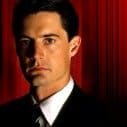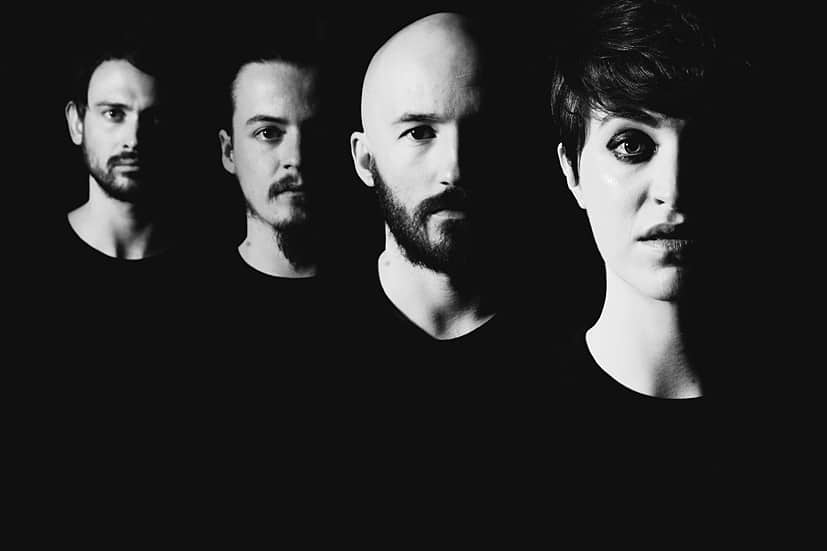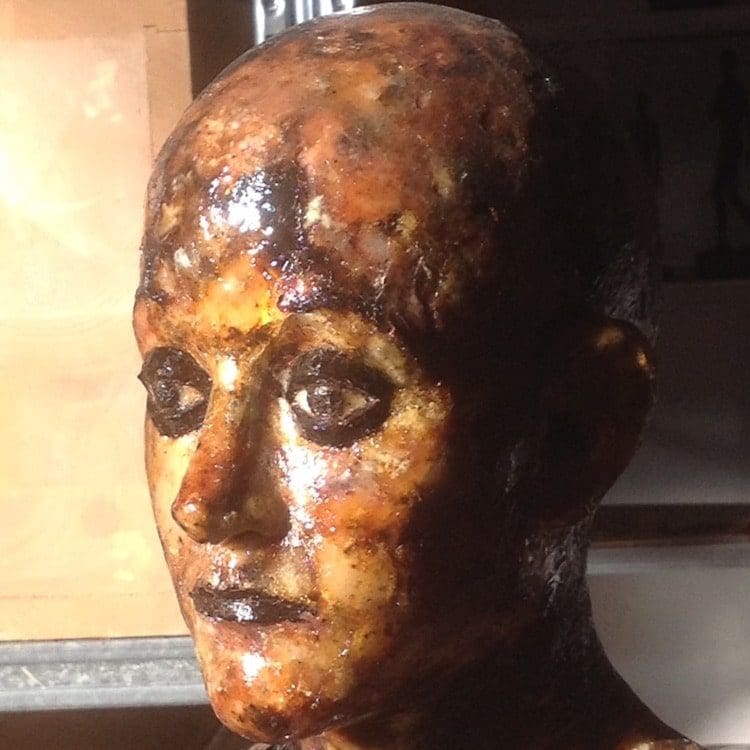Dreams, Nightmares, Twin Peaks returns – David Lynch’s TV classic is back – article by Chris Townsend
With Twin Peaks set to return to our screens any year now, what better time to ruminate upon one of the more bizarre elements of the original series, the show within a show? I refer, of course, to the brilliantly bad soap opera ‘An Invitation to Love’, which appears frequently throughout the first series on a multitude of television sets across the town of Twin Peaks, and is watched by the likes of Shelly and Lucy as well as Hank and Leo, Leland and Nadine.
Why would anyone consciously write something so hilariously awful and embed it within the narrative of a brutal set of murders? Well, there’s something about the relationship between comedy and tragedy in Twin Peaks that takes us right to its core. Let’s take a look back over the series and figure out why, and how, the show within a show worked for Mark Frost and David Lynch.
The first thing to note is that the concept of a story within a story is practically as old as the story itself. It fits into the larger notion of artworks which take as their subject the idea of art itself (this in turn relates to ‘ekphrasis’, meaning a written depiction of visual art). In current internet parlance we’re more familiar with hearing the much-abused prefix ‘meta’ used to describe this sort of thing — think of the structure of the ubiquitous Xzibit/Pimp My Ride meme series. Stories within stories tend to serve one of two purposes. Either they specifically mirror the larger narratives within which they rest, and thus illuminate certain elements of the overarching plot, or else they more generally call into question the form and style of the mode of representation in which they sit — which is to say, a show within a show makes us think about the act of watching a television series, and our role as viewer in that activity. Thus in Shakespeare’s Hamlet, the play ‘The Mouse-Trap’ so fittingly mirrors the events discussed in the play Hamlet that the King, Claudius, unwittingly reveals his own guilt after seeing it. This is equally apparent in popular culture, too. The eponymous family in The Simpsons are too absorbed by the appearance of Poochie in the in-cartoon cartoon ‘Itchy & Scratchy’ to take much notice of their own imposter, a youth named Roy who has inexplicably moved in with the family for just that one episode. We can expect comic irony and artistic revelation in equal measure when we stumble across a story within a story.
In Twin Peaks, ‘An Invitation to Love’ fits the above description perfectly. Running across the entirety of season one of the show, the absurdly bad acting and dialogue of the in-show soap operatics provide a comedy counterpoint to the pervasive horror of Twin Peaks, and also serve to explicate particular plot details by starkly mirroring the events outside it. When Laura’s cousin Maddy Ferguson turns up in the Palmer household, played by Sheryl Lee (the actress who plays the deceased Laura), we should not be surprised to find that Leland Palmer is watching an episode of ‘An Invitation to Love’ in which one actress performs the role of two sisters, Emerald and Jade. (Incidentally, I only noticed this for the first time when I rewatched that episode whilst writing about Maddy and Laura as troubled, doubled characters.) Equally, it is unsurprising that the obviously dichotomized sisters, one good, the other bad, foreshadow the innocent virtue of Maddy in contrast to the experienced and vice-ridden Laura. And when Laura’s necklace once again becomes a central feature in the story of Twin Peaks, we are treated to a close-up of Emerald’s own necklace (and bosom) as she leans over the long-suffering Chet, all the while raptly observed by Lucy Moran (“Poor Chet!”). Finally, and most brazenly, when Leo Johnson is shot through a window in the season one finale, the last thing he sees as he collapses on a sofa is his television. He sees Chet take aim and then shoot the cartoonishly brutish Montana, and watches the wavering pistol aim out at the camera, as though it were the television that had shot Leo.
All these instances draw our attention to a major feature of Twin Peaks: its soap opera styling. Cousins played by the same actress, disappearing necklaces loaded with romantic significance, sinister figures shooting characters through windows… and that’s not to mention the convoluted and deeply entangled romantic lines (consider the Donna-James-Laura-Bobby-Shelly-Leo line, for instance), or the cliffhanger endings (“Who shot Agent Cooper?”, “What happened to Catherine Martell after the mill burnt down?”). The storylines of Twin Peaks are soapier than Leo Johnson’s bloodstained laundry. But the soap opera stylization runs deeper, permeating all aspects of the show. Angelo Badalamenti’s superb soundtrack is filled to overflowing with overly sentimental outpourings and menacing sustained notes held down on a synthesiser, all of which are closer to mid-afternoon melodrama than prime time theatrics. The show is full of absurd slapstick moments, from the gentle warmth of a goofily grinning Cooper giving the thumbs up, to the all-out silliness of a moose head fallen from its mount, or deputy Brennan stepping on a badly-lain floorboard and hitting himself in the face, like some homage to Buster Keaton. Right down to the feel-goodery of Coop’s and Harry’s friendship, or the fire-side glow of the show’s beautiful and placid introduction, there are countless signifiers both subtle and overt which prepare you to view Twin Peaks as a fuzzy and trivial soap opera.
But a fuzzy and trivial soap opera it is not. Twin Peaks features some of the most unflinchingly violent images and brutally disturbing scenes to ever hit mainstream television, and the comic vignettes only add a jarring unease to the creeping horror of the show. Lighthearted surrealism gives way to unspeakable terror, with the discovery of a bloodied hammer at a murder scene, the sudden appearance of a maniacally grinning man in the Palmer household, or Leland’s final, fatal dance with his niece (“It is happening again. It is happening again.”). Twin Peaks presents a darkness that surrounds and penetrates the light of the show, that can strike through anywhere and everywhere, affecting everything and (as in the season two finale) anyone. The comic moments become stepping stones, something to keep us upright in our progress through the sea of misery and madness that is the town. We can gain some insight here by thinking about Lynch’s larger body of work. Before Twin Peaks he wrote and directed Blue Velvet, a film in which the whitewashed and mown-lawned idyll of American suburbia are interrupted and overcome by floods of evil, malicious black forces which seem, in the mind of Lynch, to lie at the very heart of Americana. The very structures that represent comfort and normality are those which conceal the most hideous secrets. Strangely, perhaps, I am always reminded of this same basic concept when I listen to Lana Del Rey. On the surface of things, she presents polished pop songs about youth and love, with an especially pro-U.S.A. vibe. But explore a little deeper and things get murkier. She sings with a false and ironic optimism about violently damaging romances, erotic obsession with the very very young, and a nihilistic impulse which constantly seems to threaten her own destruction. It seemed only right to me to discover that Lana had covered Bobby Vinton’s classic ‘Blue Velvet’, a song forever transformed by its appearance as leitmotif in Lynch’s film. Like Lynch, she channels a darkness found at the centre of the dazzle of American culture, and finds the right prism to filter out the light.
Thus the story within a story enables us to better appreciate the wilfully frivolous layer of Twin Peaks, to see as purposeful its soap-opera superficiality, around and through which bleeds the horror of Killer Bob and the murder of Laura Palmer. ‘An Invitation to Love’ encourages us to think about the standard for soap operas, to better appreciate the moments when Twin Peaks radically transgresses the limits of the genre, presenting us with unspeakable and otherworldly terror. But I would also suggest the structure of the ‘soap opera within a surreal soap opera’ has another, more crucial function in Twin Peaks. It mirrors the pattern of a further, more subtle element at work in the form of the show, which is the pervasive theme of dreams and dreaming. In a reductive sense, we could say the entirety of Twin Peaks simmers down to a battle between a murderous spiritual entity who enters into human bodies to commit his crimes, and an FBI agent who relies on foresight and the unwilled occurrence of proleptic dreams to unravel the mysteries at hand. Dreams play a vital role in the show, right from the second episode (discounting the pilot), in which Cooper’s famous backwards dream reveals clues about the identity of Laura’s killer. Donna could be describing the viewer’s experience of Twin Peaks itself when she says “It’s like I’m having the most beautiful dream, and the most terrible nightmare, all at once.” Bobby tells Norma in the pilot “I’ll see you in my dreams”, anticipating the sense that everyone and everything in Twin Peaks is seen as though in a dream. The soap opera styling begins to take on a different flavour when we start to see the show as something beyond a show, as something closer to a representation of the mind in a state of revery.
Ultimately, it seems that Twin Peaks — the entirety of the show, the dreamlike quality of the soap operatics, the absurdism, surrealism, comedy, tragedy, the whole town, the mountains, the people, the owls — Twin Peaks is itself a sort of dream. I don’t want to contest that it is some heavy handed dream-within-a-dream special-effect saturated spectacle like Inception — Frost and Lynch are too subtle, too carefully ambiguous for this to ever be close to the universe they present. It is crucial that Frost and Lynch never make explicit the reality — or ideality — of figures like the giant, the ‘Man From Another Place’, the entirety of the Black Lodge or — most crucial of all — Bob himself. There is an implicit link between mental visions and the outside world; Sarah Palmer sees Bob on several occasions and supernaturally senses the theft of Laura’s necklace by Jacoby; the Giant takes Cooper’s ring as some sort of proof that he is more than a dream. And yet, this visionariness is subjective and selective — only Cooper sees the Giant when he appears on stage in front of a crowded room, alerting the agent that Maddy is being murdered. By always resisting resolution at the last moment, it is impossible to talk about the ‘reality’ or unreality of events in a show like Twin Peaks. Nor do I suggest that there is necessarily a specific dreamer in mind. Certainly, Cooper is an avatar figure, an outsider that lets us, the viewer, vicariously enter into his experience of Twin Peaks the town. But Twin Peaks isn’t Cooper’s dream, like some secondhand plot lifted out of Dallas. Consider James Joyce’s Finnegans Wake. ‘The Wake’, with its notoriously obscurantist prose, is frequently interpreted as the nighttime companion to the daytime of Ulysses — a barely-there dreamworld cooked up by some unseen and out-of-sight dreamer. But scholars who try to specify the character of the dreamer are always laughable in their misguided efforts. Some propose it is the protagonist, ‘HCE’, dreaming up his own life; others think of the novel as a collective delusion which has fallen over the entirety of his sleeping family (Shem, Shaun, Issy, Anna); others still claim Finnegans Wake is the dream experienced by Leopold Bloom as he sleeps during the final chapter of Ulysses. These are nice distractions, but they are as unfounded and incredible as the theory that the entire Pokémon universe exists only in the mind of the comatose Ash. They are unsupported claims to unlikely truths, and we should accordingly be careful in trying to pinpoint a dreamer for Twin Peaks’ dream.
Rather, Twin Peaks at its core is a sort of disturbing journey into the centre of the human psyche, a swirling nightmarish re-presentation of the mind of both murderer and victim (perhaps that’s its central, overarching dualism). It is, as Major Briggs says of visions at the start of season 2, “The mind revealing itself to itself.” It could be the bizarre fantasy or mental torture of Leland Palmer, grieving for the murder he committed, planning, through his tears, the symmetrical murder of Maddy. It could be the tormented mind of Laura, a psychic projection of her own search after selfhood, an attempt to uncover some paradise lost, an innocent prelapserian Laura Palmer, before Bob or Leland robbed her of her youth. Essentially, it is both. We shouldn’t lean too heavily on the authors when looking for answers to the riddle of Twin Peaks, but it is telling that, in an often-cited quote from the book Lynch on Lynch, David Lynch himself describes Twin Peaks: Fire Walk With Me as being about “the loneliness, shame, guilt, confusion and devastation of the victim of incest. It also dealt with the torment of the father – the war within him.” The dualities of the show amount to a double mind, destroying itself like Laura and Leland destroyed one another. The truth of the show, underneath its myriad layers, does not include Cooper nor Harry nor giants nor dwarves: it is a show about the broken and abusive relationship between a father and his only daughter. It is about the conflict of selfhood that arises out of the most abhorrent crimes, in both perpetrator and victim. It is about the all-consuming cycle of flames set into motion by the surrendering of self to the thoughts which lie in the darkest recesses of the human mind, things (Frost and Lynch make us feel) that might lurk at the back of any or all of our minds.
Twin Peaks is often cited as a major influence on the superb videogame ‘survival horror’ series Silent Hill. But, working backwards, Silent Hill might also help us to better understand Twin Peaks. In the second game (easily the best of the series), it becomes clear that Silent Hill is less a place, less a sleepy American backwater town plagued by deformed monsters and terrifying phantasms, and more a terrifying state of mind. James, the dubious hero of the game, sees a woman, Maria, everywhere he turns. She is the uncannily exact image of his dead wife, Mary. Mary was dying of cancer; James, it is revealed late in the game, smothered her with a pillow to prematurely end her pain. The game you play through is a sophisticated manifestation of the guilt he feels, knowing he was also ending his own pain, his own misery. It is an exercise in self-flagellation and torment, a journey through an entire town built on the foundations of one disturbed and self-loathing mind. This owes a huge debt to Twin Peaks, which manages to present not just a town as a nightmare interpretation of criminal consciousness, but an entire television show. Through the patterning of ‘An Invitation to Love’, the cheesy show which draws attention to the cheesiness of its parent show, we notice the patterning of dreams which relate to the dreaminess of the entire series. It becomes less and less important what is real and what isn’t, because the horrible truth at the core of the series is also the horrible truth of Blue Velvet and Lana Del Rey’s music: that modernity, and the modern mind, are irremediably plagued with horrors beyond words, nihilistic nightmares that destroy beauty, fly in the face of reason, and tend only towards self-destruction, but which begin in our own perverted desires. Twin Peaks is not really Leland’s dream, nor Laura’s nightmare, but a sort of representation of a collective subconsciousness for western society. Where Lynch in Blue Velvet presents American suburbia and the family unit as the superstructure we try to impose over the ugliness of the subconscious, it is the form of the soap opera itself that tries (and fails) to structure the madness of Twin Peaks. The very idea of a comforting television soap becomes the spectacle of horror, the sublimely distressing focal point which draws us in and forces us to confront our own minds, our own inner demons. No wonder there are mirrors and doubles wherever we look in the show, no wonder we find ourselves staring intently at characters on the television, who are in turn staring intently at characters on television. Reading Twin Peaks through this holistic lens, it is impossible to see it as anything other than a masterpiece achievement, a terrifying portrait of the worst aspects of humanity, and the vain efforts we make to mask and conceal that ugliness. We can only hope that Frost and Lynch have something equally special up their sleeves for season three. I can hardly wait.
Dreams, Nightmares, Twin Peaks returns – David Lynch’s TV classic is back – article by Chris Townsend




















